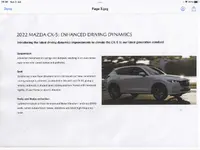- :
- CX5 GT
there was a joke or may be not so much a joke but the seat designers on the gen2 that Mazda used were slim japanese women. There is even a video somewhere Mazda advertising this and saying they focused on best seat design, etc.
So this may explain it. The average japanese is most likely smaller than the average western european or american person.
And looking at the gen3 cx5 2022 it seems they stick with the same seat design. Only the cx50 have the bigger seats most likely from the cx9.
The seats are the biggest complain on the CX5 gen2.
So this may explain it. The average japanese is most likely smaller than the average western european or american person.
And looking at the gen3 cx5 2022 it seems they stick with the same seat design. Only the cx50 have the bigger seats most likely from the cx9.
The seats are the biggest complain on the CX5 gen2.


